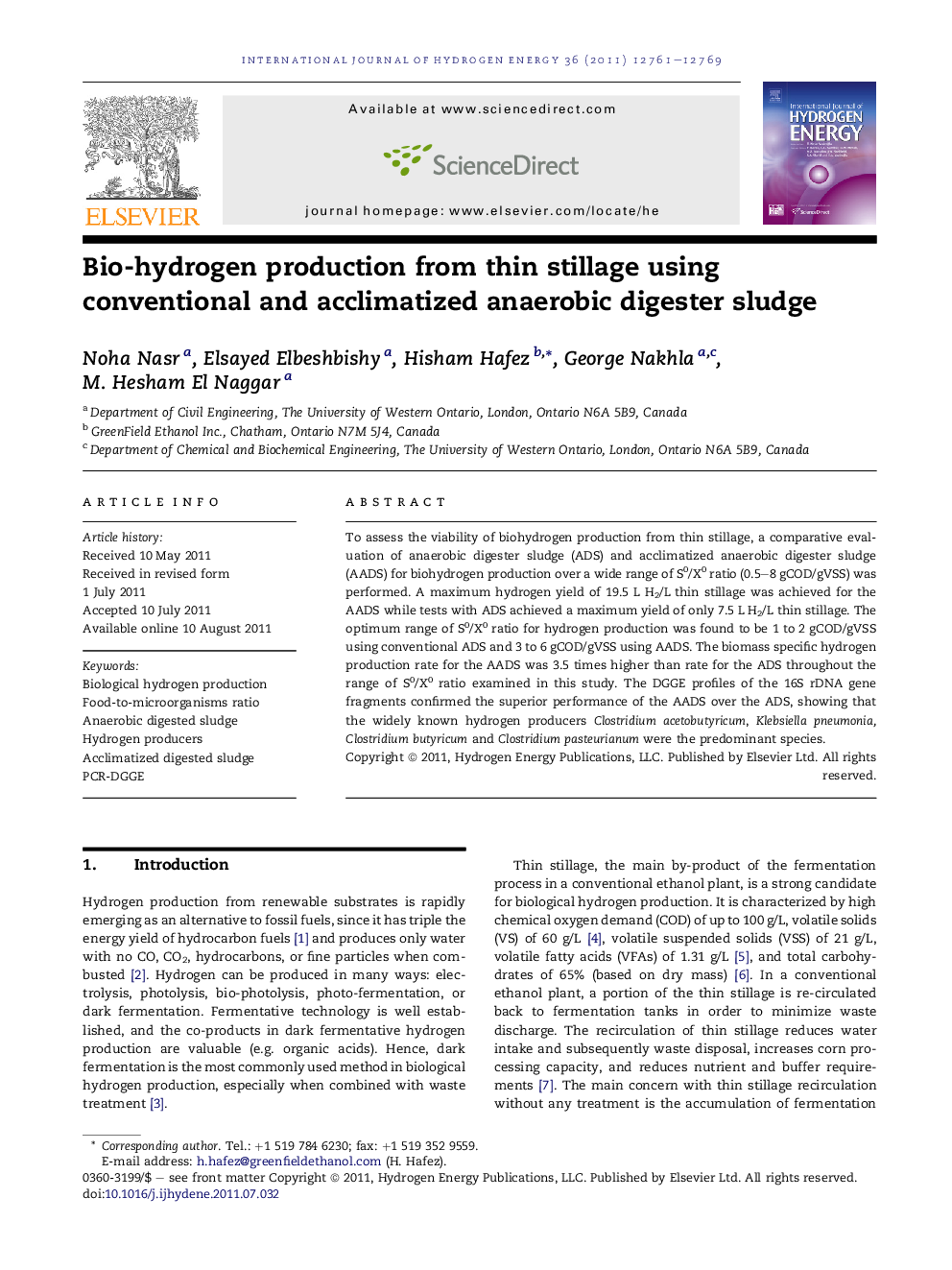| Article ID | Journal | Published Year | Pages | File Type |
|---|---|---|---|---|
| 1271940 | International Journal of Hydrogen Energy | 2011 | 9 Pages |
To assess the viability of biohydrogen production from thin stillage, a comparative evaluation of anaerobic digester sludge (ADS) and acclimatized anaerobic digester sludge (AADS) for biohydrogen production over a wide range of S0/X0 ratio (0.5–8 gCOD/gVSS) was performed. A maximum hydrogen yield of 19.5 L H2/L thin stillage was achieved for the AADS while tests with ADS achieved a maximum yield of only 7.5 L H2/L thin stillage. The optimum range of S0/X0 ratio for hydrogen production was found to be 1 to 2 gCOD/gVSS using conventional ADS and 3 to 6 gCOD/gVSS using AADS. The biomass specific hydrogen production rate for the AADS was 3.5 times higher than rate for the ADS throughout the range of S0/X0 ratio examined in this study. The DGGE profiles of the 16S rDNA gene fragments confirmed the superior performance of the AADS over the ADS, showing that the widely known hydrogen producers Clostridium acetobutyricum, Klebsiella pneumonia, Clostridium butyricum and Clostridium pasteurianum were the predominant species.
► The maximum H2 yield was 19.5 L H2/L thin stillage for acclimatized sludge (AADS). ► Conventional anaerobic sludge (ADS) achieved a yield of 7.5 L H2/L thin stillage. ► The biomass H2 production rate for the AADS was 3.5 times higher than that of ADS. ► Clostridium acetobutyricum, Klebsiella pneumonia, Clostridium butyricum, Clostridiumpasteurianum dominated the AADS.
